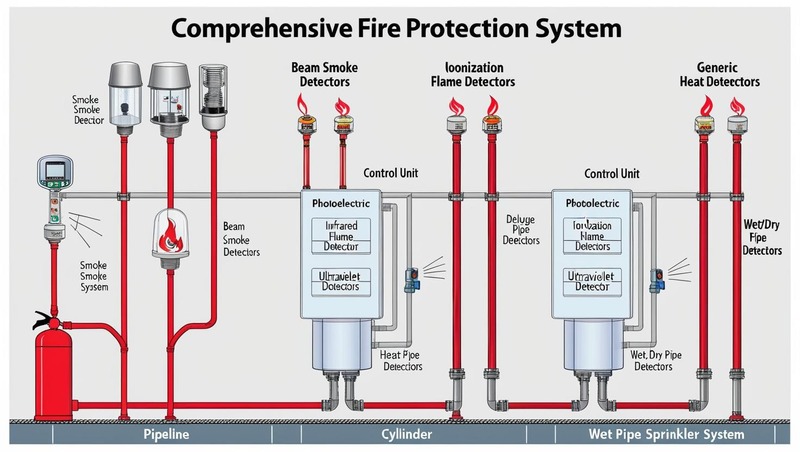Artificial Intelligence (AI) is revolutionizing the global fire protection system market, enhancing detection accuracy, response times, and predictive maintenance capabilities. This transformation is driven by technological advancements, stringent safety regulations, and the increasing complexity of urban infrastructures.
AI-Driven Innovations in Fire Protection
- Enhanced Fire Detection and Monitoring: AI-powered systems utilize machine learning algorithms to analyze data from various sensors, enabling early detection of fire hazards. These systems can distinguish between actual fire events and false alarms, improving response reliability. For instance, AI-enabled cameras and satellites are now being used to scan for signs of smoke and detect fires, as seen in California’s statewide AI system that identifies smoke through mountaintop camera feeds.
- Predictive Maintenance and Risk Assessment: By analyzing historical data and identifying patterns, AI can predict potential fire risks and equipment failures. This allows for proactive maintenance, reducing downtime and preventing incidents. The Firebird framework developed for the Atlanta Fire Rescue Department exemplifies this approach by computing fire risk scores for buildings, thereby prioritizing inspections and enhancing safety.
- Integration with Building Management Systems (BMS): AI facilitates the integration of fire protection systems with BMS, enabling coordinated responses during emergencies. This includes automatic shutdown of HVAC systems, unlocking of exit doors, and activation of emergency lighting, thereby enhancing occupant safety.

Download PDF Brochure @ https://www.marketsandmarkets.com/pdfdownloadNew.asp?id=1018
Market Growth and Regional Insights
The fire protection system market size is predicted to grow from USD 71.6 billion in 2024 to USD 97.2 billion by 2029, growing at a CAGR of 6.3% from 2024 to 2029. This growth is fueled by the adoption of AI and IoT technologies, stricter fire safety regulations, and the development of smart cities.
- North America: The U.S. market is experiencing significant growth due to the integration of AI in fire protection systems, enhancing detection capabilities and response times.
- Asia-Pacific: Countries like Japan, South Korea, and China are leading in the development of smart fire protection systems, driven by economic growth and investments in infrastructure.
Challenges and Considerations
Despite the benefits, the integration of AI in fire protection systems presents challenges:
- High Initial Costs: The implementation of AI-driven systems requires substantial investment, which can be a barrier for small and medium-sized enterprises.
- Cybersecurity Risks: As systems become more interconnected, they are susceptible to cyber threats, necessitating robust security measures.
- Skilled Workforce Shortage: There is a lack of trained professionals to install and maintain advanced fire protection systems, which can impede adoption.
Future Outlook
The integration of AI into fire protection systems is set to continue, driven by technological advancements and the need for improved safety measures. As urbanization progresses and smart city initiatives expand, the demand for intelligent fire protection solutions will rise. Addressing the challenges of cost, cybersecurity, and workforce training will be crucial to fully realize the benefits of AI in this sector.